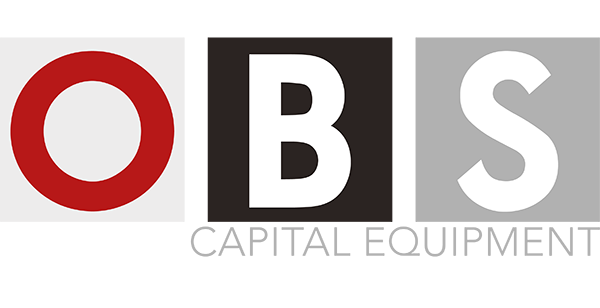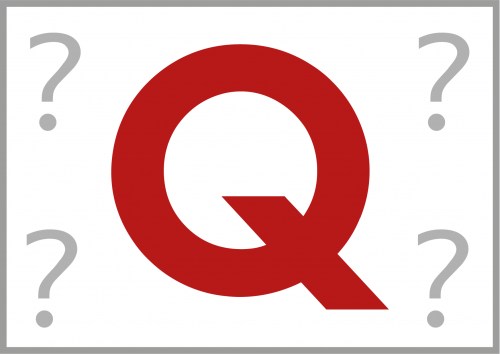Open-ended questions are the most powerful tool available to the material handling salesperson. Their effective use:
- Focuses the conversation on the client
- Encourages clients to talk about themselves and their operations
- Helps the salesperson control how much they themselves talk
- Controls conversations
- Demonstrates genuine interest in the client
- Helps the salesperson learn about the client’s operation
In the Objective Based Selling model, focusing on the questions propels the sales process toward a decision and commitment to the salesperson’s proposal. This report covers:
- The basics of open-ended questions & questioning
- Funnel theory of open-ended questions
- Following the trail of the answers
- Client reactions to open-ended questions
- What to do after asking open-ended questions
1. THE BASICS OF OPEN-ENDED QUESTIONS & QUESTIONING
The most basic definition of an open-ended question is that it is a question that cannot be answered with only yes or no. By contrast these are called closed-ended questions. Often these “close” the discussion with the client, without revealing any helpful information.
A typical closed-ended question for clients is:
Q: “Do you have any material handling needs?”
And a typical client answer to this closed-ended question is:
A: “No.”
Now, what’s the salesperson to say in response to such a negative comment? So, let’s ask an open-ended question instead:
Q: “If you could change one thing about your material handling operations, what would it be?”
This open-ended question gently encourages the client into a discussion and discourages a quick, trite response.
There are six key words used in open-ended questions. These are what, why, when, how, where and who. Any of these can be included in an introductory statement, for example:
“I understand price is a key criteria for your selection, but if all the prices were the same, what would your key decision criteria be?”
In addition, there are two STEALTH METHODS of asking open-ended questions, encouraging the client to talk. These are:
- “Tell me about…”
- “Describe for me…”
That’s it. The salesperson who masters these six magic words and two phrases has begun to master Objective Based Selling and has more professional skills and techniques than most of their competitors.
The link at the end of this report supplies over 100 open-ended questions specific to the sale of material handling equipment. These questions can be modified with word substitutions for specific material handling areas or products and for specific situations. It also gives a summary of the most effective open-ended questions, organized by the stages of the Objective Based Selling model, as outlined on the Objective Based Selling diagram.
2. FUNNEL THEORY OF OPEN-ENDED QUESTIONS
An effective method of using open-ended questions is to ask the broadest question first; then, based on the client’s answer, move to narrower questions. The benefit being that this encourages a client’s wider thinking about the project, so the salesperson has a better chance of learning all pertinent information. It also prevents the salesperson from making assumptions regarding what is most important to the client.
Example one: the time question
Every viable material handling project has a time objective. Salespeople often assume that this objective is delivery-related, asking “When do you need it?” or some variation of that question. Many salespeople don’t even ask; they simply offer their delivery information up front such as “Our delivery is running at six months” or “We have one in stock if you act quickly.” However, the client’s time objective may not even be related to delivery.
A broader, more effective opening question about time is:
- “Tell me about the time frame for this project?”
- Or, broader still: “What is our time frame?”
A broader more effective opening question about time is:
- “Tell me about the time frame for this project”
- Or broader still: “What is our time frame?”
Let the client tell you what’s important about time. This can be followed up with narrower questions as the process continues, such as:
- “When do you need this information?”
- “When do you need this proposal?”
Whenever a client states a specific time frame, its important that the follow-up question asks “Why is that deadline/date/time frame important?”
Example two: the money question
Salespeople like to ask: “What’s your budget?“ or the ineffective, yet ever-popular: “How much do you have to spend?” Yet the broadest, and therefore the first, money question should be along the lines of: “What are the financial considerations in this project?”
3. FOLLOWING THE TRAIL OF THE ANSWERS
While mastering the open-ended questions to ask, salespeople should also learn to listen carefully to a client’s answers, then follow the “trail of the answers.” The next most effective question to ask is based on the answer just given.
Example of a typical trail of answers with follow-up questions:
Q: “What are the financial considerations in this project?”
A: “I need to fight for budget approval from our Finance Committee.”
The questions below demonstrate how just one open-ended question can lead to a whole set of follow-up questions, all following the trail of the client’s answers:
- “Who is on the Finance Committee?”
- “What is their role?”
- “If you get turned down, how do you meet your objectives in this project?
Ask effective open-ended questions. Listen carefully to the answers. Follow the trail of the answers with strong, logical, follow-up, open-ended questions.
4. CLIENT REACTIONS TO OPEN-ENDED QUESTIONS
A common question of salespeople about the process of persistently asking open-ended questions is: “What will the client’s reaction be?”
Salespeople are often afraid of alienating clients with probing questions. The more questions they ask, the more nervous they become that the client will be alienated.
Of course, salespeople must constantly watch and be sensitive to the client’s reaction to the questions, but most clients want to be asked. They know they need help and are sceptical of any salesperson making recommendations without asking about their operations or needs.
If the questions are asked in an honest way, as part of a professional sales process, clients seldom refuse to answer or become irritated. As a salesperson senses that one too many questions may have been asked, simply change the subject or end the current conversation.
In the author’s experience, “Ask, and they will answer.”
5. WHAT TO DO AFTER ASKING OPEN-ENDED QUESTIONS
- Ask another open-ended question
- Shut up!
- Give the client an interested look
- Be quiet
- Actively listen and where possible maintain eye contact
- When the client talks, take notes as appropriate
- Salespeople often find the second instruction on this list, ‘Shut up!‘, the most difficult to follow. When an appropriate, effective open-ended question is asked, clients often need a moment to reflect on their answer. Silence during conversation makes many people uncomfortable. As the silence lengthens, salespeople become nervous and can sometimes jump to another question before their first one has even been answered. Or, amazingly, attempt to answer the question on behalf of the client, such as: “When do you need this equipment?…As soon as possible?”
- A phrase sometimes used in communication is “the pregnant pause.” This is that time in a conversation when, after a question or statement, it’s appropriate that something else is said, but it’s momentarily silent. Salespeople must learn to accept the silence and let the client deliver the next statement, let the client break the pregnant pause. Any salesperson who can’t either pause or shut up should find a new profession!
To summarise this report in two short takeaways:
TAKEAWAY ONE:
Never interrupt a client when they are talking
TAKEAWAY TWO:
Questions are your superpower!
DOWNLOAD THE FULL ARTICLE AND MORE HERE.

